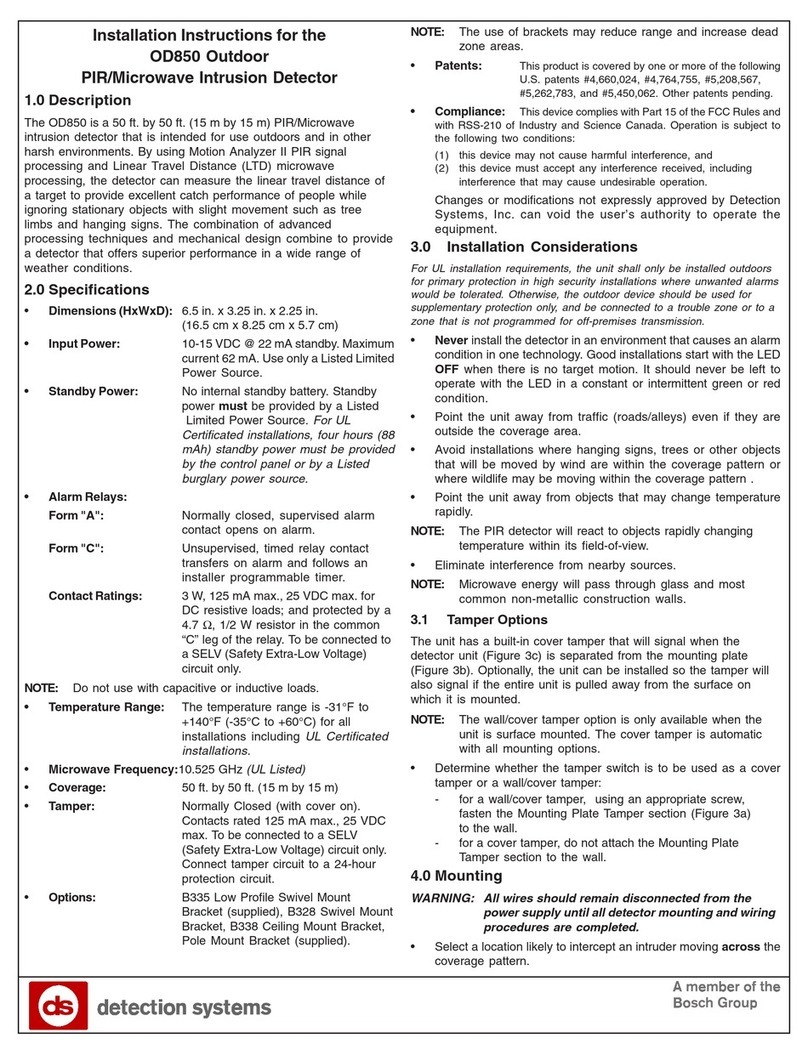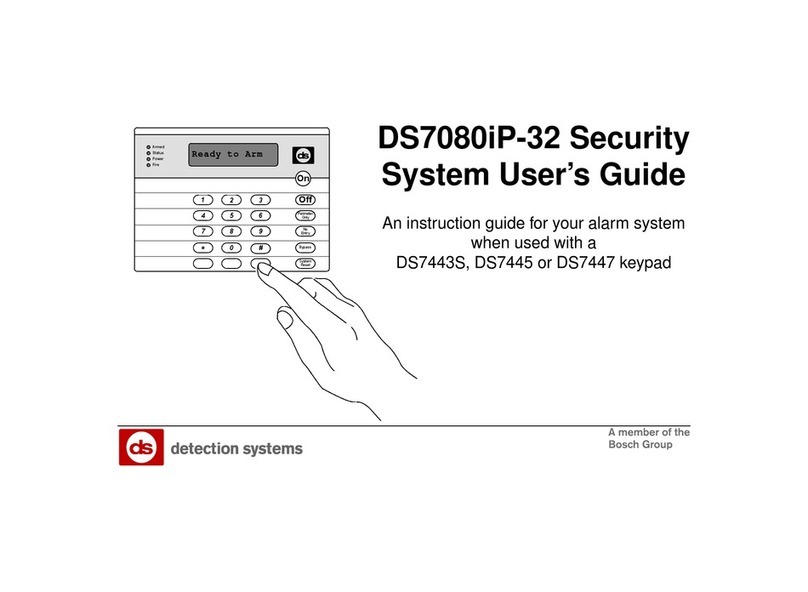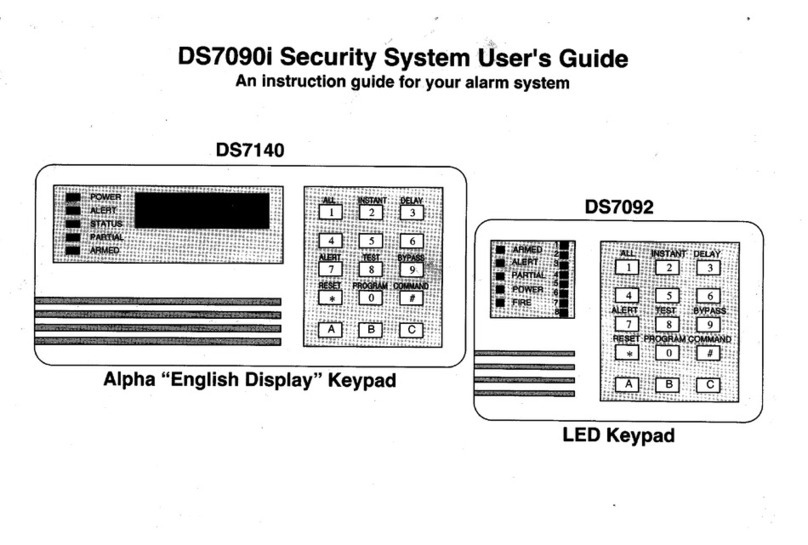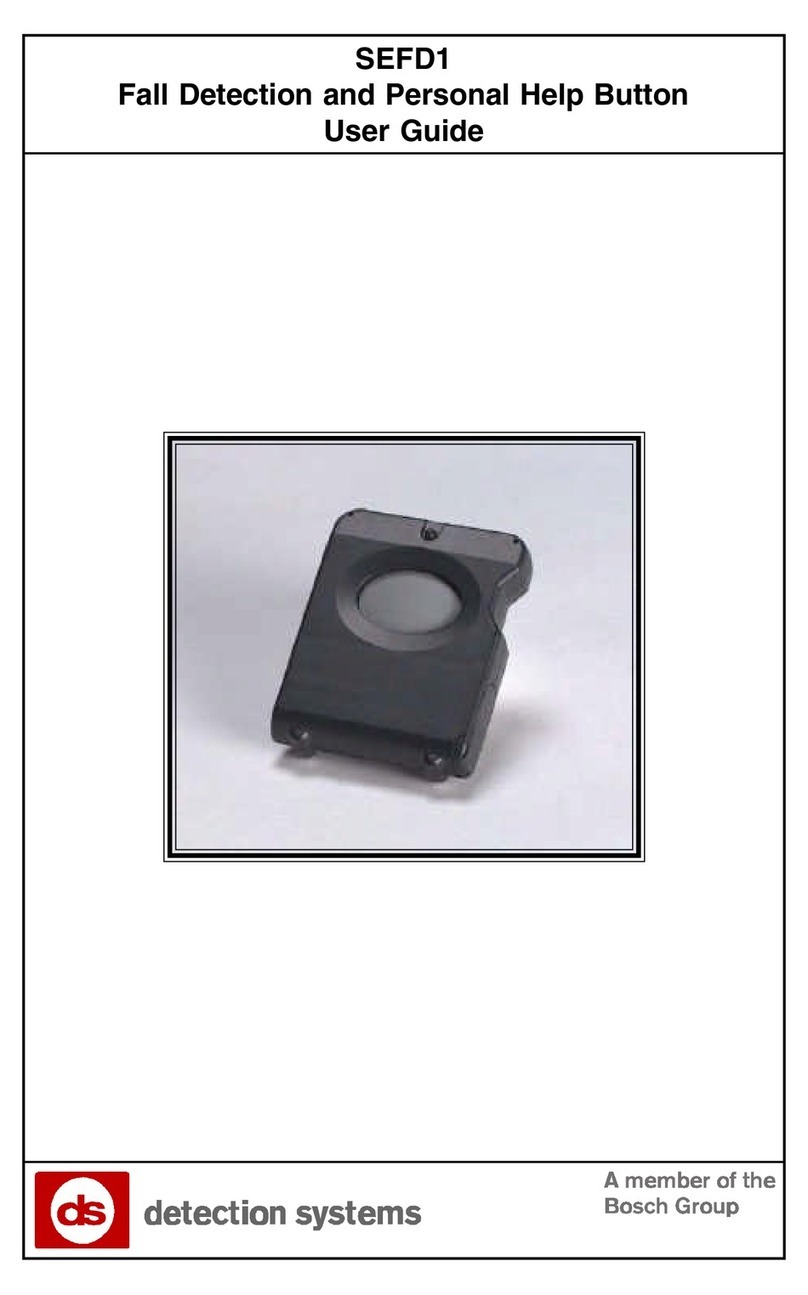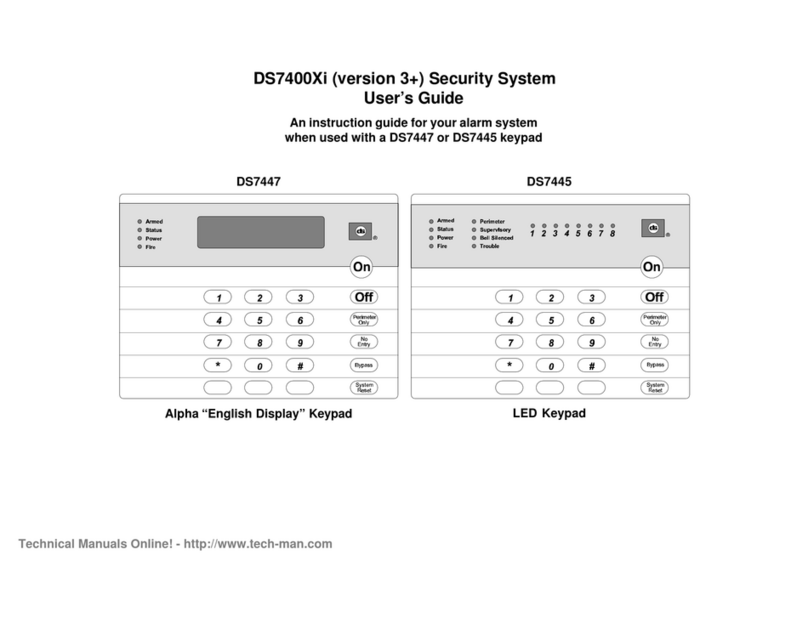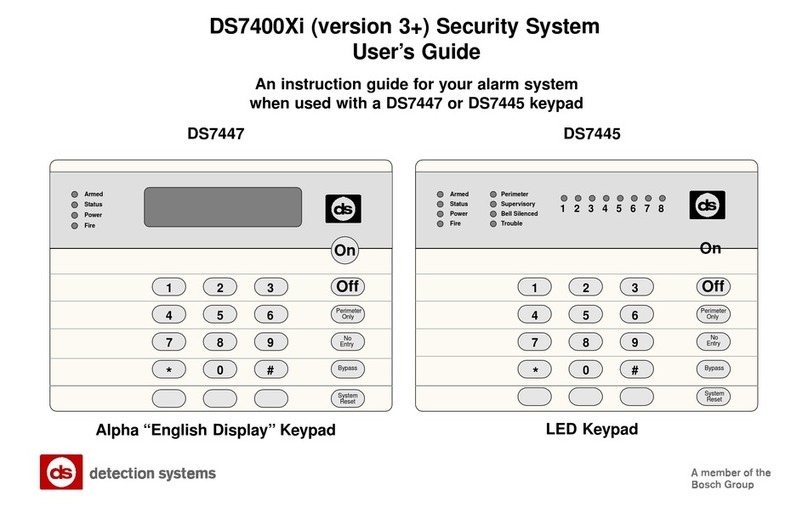Page 2
Contents
1.1 Understanding the DS7443, DS7445, and DS7447 Keypads.....................................................4
1.2 Personal Identification Numbers ...............................................................................................6
1.3 Setting the Time.......................................................................................................................8
1.4 Setting the Date .......................................................................................................................9
1.5 Turning ON (arming) the System ............................................................................................10
1.6 Quick Arming the System.......................................................................................................12
1.7 Easy Exit ...............................................................................................................................12
1.8 Turning OFF (disarming) the System/Silencing Alarms ...........................................................12
1.9 Force Arming .........................................................................................................................14
1.10 Auto Bypass ..........................................................................................................................15
1.11 Zone Bypass .........................................................................................................................15
1.12 Chime Mode ..........................................................................................................................17
1.13 Zone Test ..............................................................................................................................17
1.14 Local Battery/Sounder Test ....................................................................................................19
1.15 Communicator Test................................................................................................................20
1.16 Read Alarm History................................................................................................................21
1.17 Fire Reset/Fire Trouble ..........................................................................................................21
1.18 Remote Program Dial-out and Answer....................................................................................22
1.19 Error Displays ........................................................................................................................23
1.20 Duress Code .........................................................................................................................25
1.21 Guest Code ...........................................................................................................................25
1.22 EmergencyProcedures..........................................................................................................25
1.23 Emergency Keypad Alarms ....................................................................................................26
1.24 Fire Safety .............................................................................................................................27
Index .................................................................................................................................32
This system includes a telephpne line seizure feature. The system may be programmed to communicate with a central monitoring
station to report system events. You will not be able to use your phone while the system is communicating with the central monitor-
ing station. In the unlikely event that the central station is not able to receive the report, your phone may be unavailable for up to 20
minutes while the panel makes additional communications attempts.
